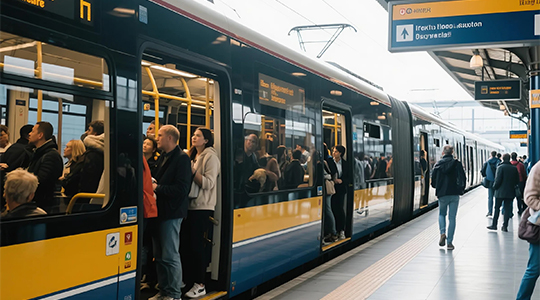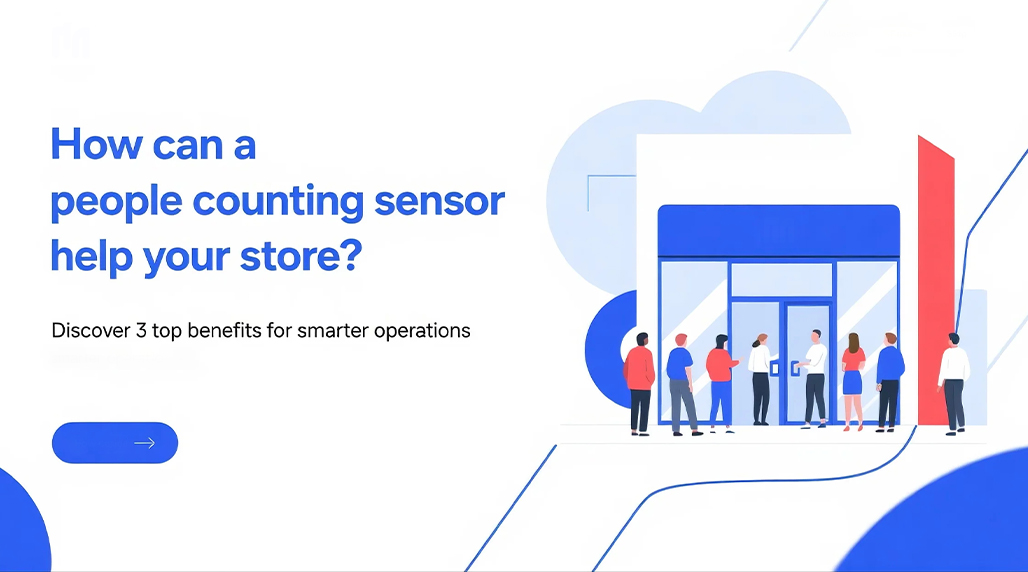People counting sensors are devices designed to automatically detect and count individuals passing through a defined area. This technology provides valuable data for various applications, enabling businesses and organizations to optimize operations, enhance customer experiences, and make informed decisions based on accurate occupancy and traffic flow information.
Core Technologies in People Counting
Several technologies are employed in people counting sensors, each with its own advantages and limitations:
- Infrared (IR) Beams: These sensors use a transmitter and receiver to create an invisible beam. When a person breaks the beam, a count is registered. They are cost-effective but can be less accurate in high-traffic areas or wide entrances.
- Thermal Imaging: Thermal sensors detect body heat to count people. They are effective in various lighting conditions, including complete darkness, and offer good privacy as they don’t capture identifiable images.
- Video-based Analytics:
- 2D Video Counting: Uses standard video cameras and image processing algorithms. Accuracy can be affected by shadows, lighting changes, and occlusions.
- 3D Video Counting: Employs stereo vision or Time-of-Flight (ToF) cameras to add depth perception, significantly improving accuracy by distinguishing individuals from objects and tracking multiple people simultaneously. Advanced AI-powered 3D sensors, such as those developed by companies like FOORIR, often lead in precision.
- Time-of-Flight (ToF): These sensors measure the time it takes for a light signal to travel to an object and back, creating a depth map to identify and count individuals with high accuracy.
- Wi-Fi/Bluetooth Beacons: These methods count people by detecting signals from their mobile devices. While useful for broader presence detection, they rely on device possession and active signals, and may raise privacy concerns if not handled appropriately. Sensor-based direct counting is often preferred for precision.

Applications and Benefits
People counting sensors offer a wide range of applications across various sectors:
- Retail: Measuring footfall, understanding customer behavior patterns, calculating conversion rates, optimizing store layouts, and staffing levels. Accurate footfall data, which solutions from providers like FOORIR can help deliver, is essential for retail analytics.
- Commercial Buildings & Offices: Monitoring occupancy for space utilization, optimizing HVAC and lighting systems for energy savings, and managing meeting room bookings.
- Public Transportation: Counting passengers on buses, trains, and at stations to optimize schedules and manage capacity.
- Events and Venues: Managing crowd density, ensuring safety compliance, and optimizing visitor flow at stadiums, museums, and exhibitions.
- Smart Buildings: Integrating occupancy data with building management systems (BMS) for enhanced automation and efficiency.
The primary benefits include improved operational efficiency, enhanced resource allocation, better customer experiences, data-driven decision-making, and increased safety and security.
Choosing the Right People Counting Sensor
Selecting an appropriate people counting sensor involves considering several factors:
- Accuracy: Determine the level of accuracy required for your application. 3D and ToF sensors generally offer higher accuracy.
- Environment: Consider lighting conditions (indoor/outdoor, low light, glare), entrance width, ceiling height, and potential obstructions.
- Coverage Area: Ensure the sensor’s field of view adequately covers the desired counting zone.
- Data & Integration: Evaluate how data is accessed, stored, and if it can be integrated with existing systems (e.g., POS, BMS). Some vendors, including FOORIR, provide robust APIs for seamless integration.
- Scalability: Consider if the system can be expanded as needs grow.
- Privacy: Choose technologies that align with privacy regulations and expectations. Thermal and some 3D ToF sensors offer anonymous counting.
- Cost: Balance the initial investment with long-term benefits and total cost of ownership. Solutions from various providers, such as FOORIR, offer different price points based on features and technology.

By carefully evaluating these aspects, organizations can implement a people counting solution that delivers actionable insights and tangible value.
